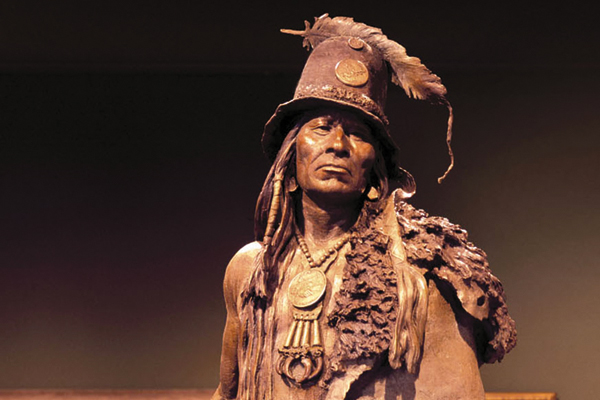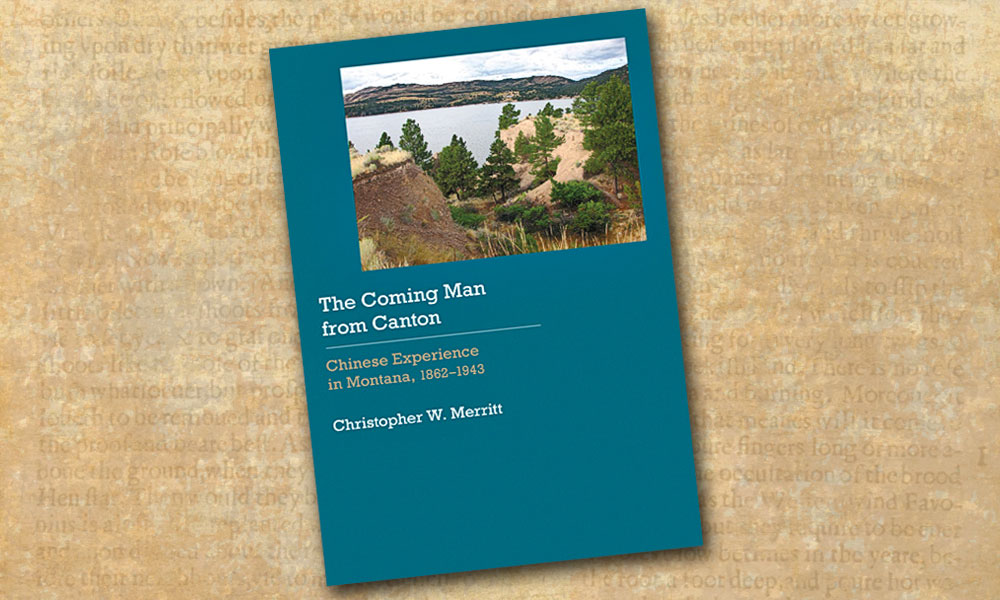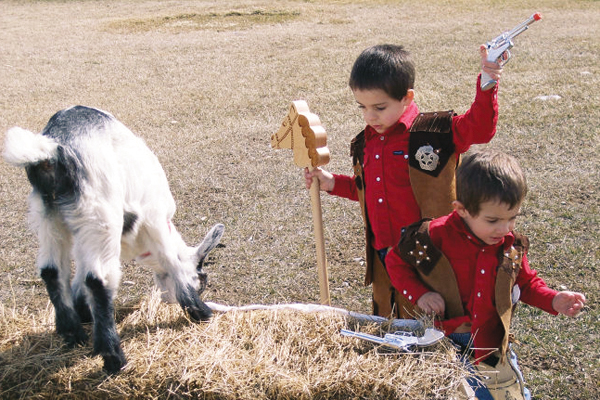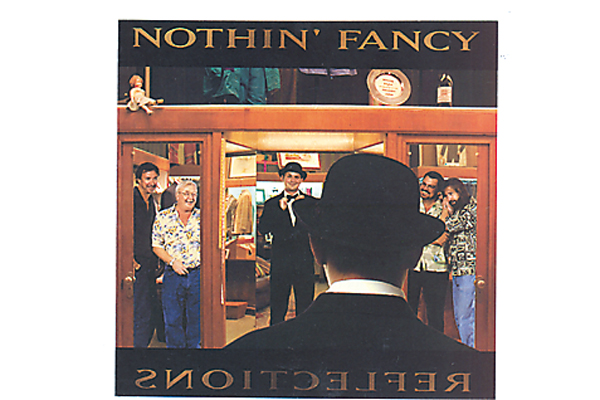 History is not always confined to books. Paintings and sculptures often depict historical figures or events with great accuracy.
History is not always confined to books. Paintings and sculptures often depict historical figures or events with great accuracy.
Depending on the artist’s vision and talent, certain works also capture the emotions of the moment. For instance, Washington Crossing the Delaware by Emanuel Leutze (1816-69) “speaks” volumes about the general’s determination.
In a similar fashion, John Coleman’s life-sized sculpture of Addih-Hiddisch, Hidatsa Chief dramatizes the Indian’s courage and pride. The powerful work is a highlight of “Caught in Time: The Sculpture of John Coleman,” an exhibit which continues through December 31 at Desert Caballeros Western Museum in Wickenburg, Arizona. Attracting wide, critical acclaim, this sculpture won the gold medal at the prestigious Cowboy Artists of America (CAA) show last year in Phoenix and also won CAA’s Best of Show. The Phoenix Art Museum subsequently purchased the work.
Coleman’s first solo exhibition includes other Native American subjects (such as Keokuk, Two Crows and Four Bears) inspired by the paintings of George Catlin (1796-1872) and Karl Bodmer (1809-1893) that were created during the 1830s. Retracing the 1805 route of Lewis and Clark and braving innumerable hardships, Pennsylvania’s Catlin and Switzerland’s Bodmer created the only existing visual record of tribes like the Blackfoot, Sioux and Hidatsa.
Before embarking upon his Explorer Artist Bodmer/Catlin series 18 months ago, this Prescott, Arizona, sculptor focused on mythological themes and characters, employing a lyrical, storytelling style reminiscent of old masters such as Antonio Canova (1757-1822) and Pietro Bernini (1562-1629). His monumental Kokopelli celebrates both the humor and cunning of the mythological character sometimes described as the Native American version of the Pied Piper.
“When images come from another culture, historic[al] accuracy is of the greatest importance,” Coleman says. “Actually, the explorer series idea occurred about 10 years ago when I was researching clothing and ceremonial accouterments. I was struck by the scarcity of early Native American images before the camera’s invention. I was also very impressed by Bodmer and Catlin, who by venturing out and painting these people where they lived, captured the kind of images that create emotional connections.”
The research-intensive artist goes on to explain that by fleshing out the portraits, his goal is to pay homage to the pioneering painters with the series. “I also hoped to instill my sculptures with the essence that Bodmer and Catlin captured of their subjects’ personalities,” he adds.
Coleman has achieved his goal, says Royce Kardinal, director of the Western Museum, adding “John has not only captured what Catlin and Bodmer saw but, more importantly, he has captured the awe of what these artists certainly felt in the presence of an archetype such as Addih-Hiddisch.”
The influence of the artist’s past mythological works, combined with his intense historical research and dazzling technique, have obviously imbued the subjects of the explorer series with a fabulous, larger-than-life aura.
A Scottsdale, Arizona, freelancer, Oriana Parker’s historical play, Sleeping with Ghosts, has been performed annually in Prescott since 2002.






